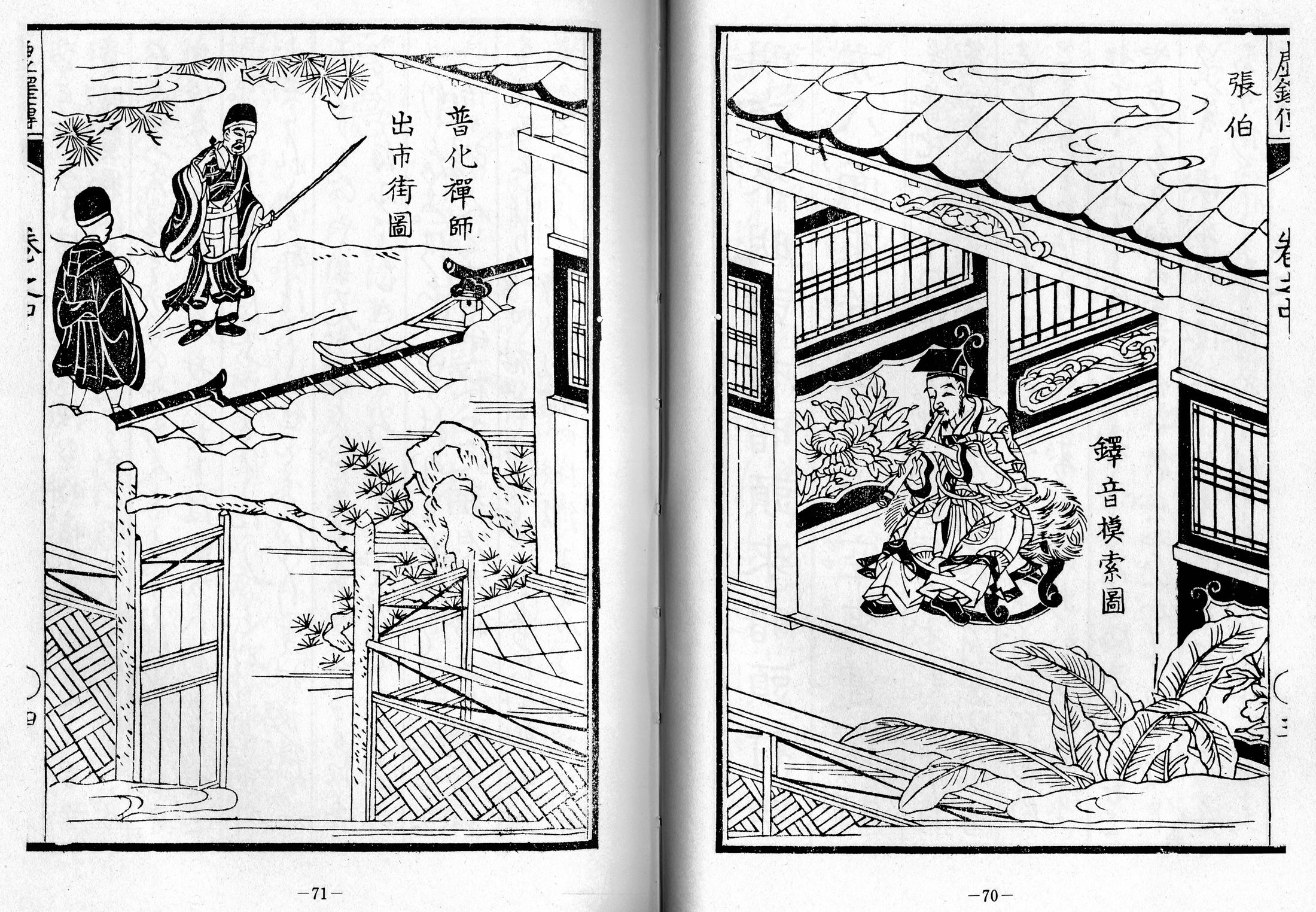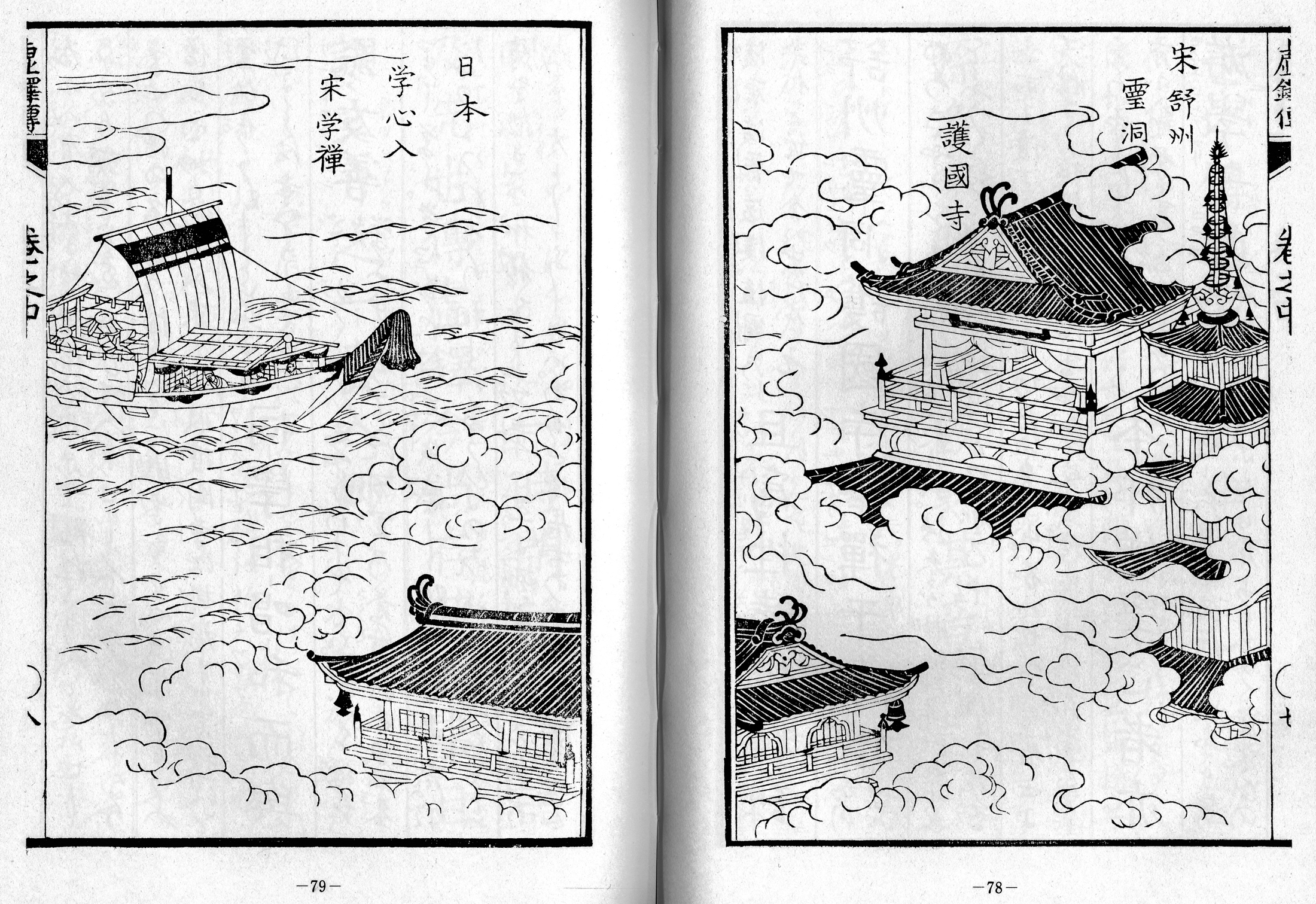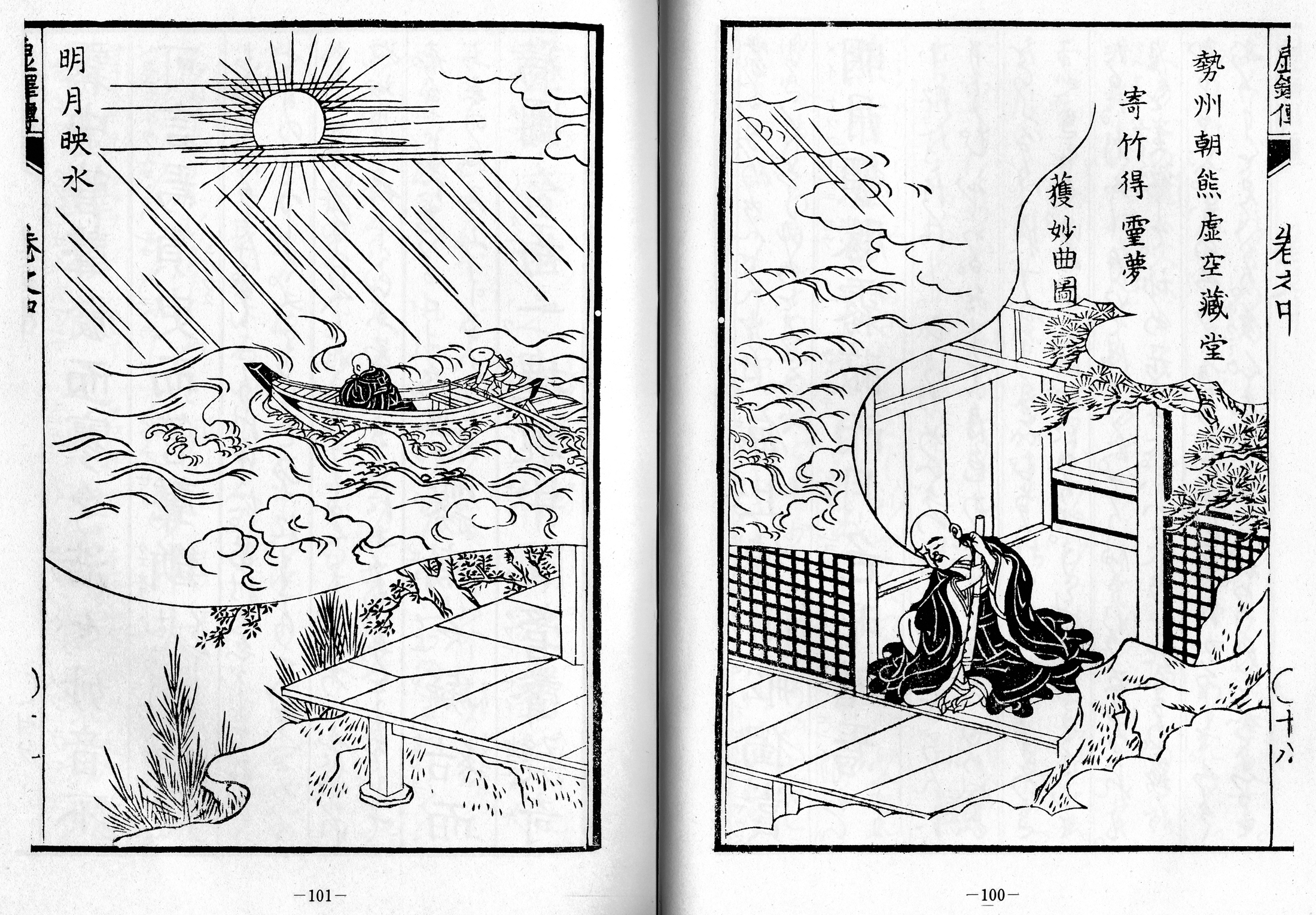
'Kyotaku denki kokujikai', 1795:
Here, the illustrator shows us how, supposedly, Fuke's walking in the streets while ringing his beggar's bell
inspired a never having existed 'Chō Haku',
to create the solo flute piece 'Kyorei'.
Source of illustrations:
Kowata Suigetsu, compiler & editor: Kyotaku denki kokujikai.
Author: Yamamoto Morihide, Kyōto, 1795.
216 pages, Nihon ongaku-sha, Tokyo, 1981.

'Kyotaku denki kokujikai', 1795:
The picture shows Shinchi Kakushin on his way in an ocean going sailboat to study
Zen Buddhism in China, mid-13th century.

'Kyotaku denki kokujikai', 1795:
Truly so, Kakushin returned from China, in 1254 - here approaching land
near Hakata on Kyūshū.
Interestingly, Hakata is the hometown of the sub "temple" of Kyōto Myōan-ji
named Itchōken, a small provincial ascetic shakuhachi center that
was actually only established there late in the 17th centuiry, at the earliest.

'Kyotaku denki kokujikai', 1795:
This is the moment when Shinchi Kakushin presents his Japanese student, the legendary 'Kichiku',
with the flute that he supposedly brought with him back from China
in 1254 - that is: certainly only according to the legend!

'Kyotaku denki kokujikai', 1795:
This is when, relates the legend, Kichiku receives the solo piece 'Mukaiji' in a dream
- later having his master Kakushin give the tune that title ...

'Kyotaku denki kokujikai', 1795:
In this scene, the legendary ascetic flute practice transmitter named 'Kyōfū' first meets
the 14th century samurai general Kusunoki Masakatsu who is known, in real life, to have lost his last, decisive battle in 1399.
Masakatsu then simply having disappeared, the mid-17th century komusō conspirators could therefore
"easily adopt" him into their growing shakuhachi player movement
and beggar monk ranks:
In the Kyotaku denki, Masakatsu was given the new name 'Kyo-mu', 虚無, thus honoring him as the very first albeit "pseudo-historical" 'komusō'
of samurai heritage, 虚無僧 - that is, of course: only legendarily.
And, as acc. to Wikipedia Masakatsu died already on January 31, 1400,
he would have had very limited time to wander and spread any ascetic shakuhachi gospel.

'Kyotaku denki kokujikai', 1795:
In this concluding illustration we are expected to appreciate Kyōfū sending his disciple Kyomu off on pilgrimage along the 'Tōkaidō' Eastern Coastal Highway.
Kyomu is shown dressed and equipped in a way that would have been completely unthinkable around the year 1400, and even afterwards:
The thick "root-end 'shakuhachi' flute only appeared late in the 17th century.
The 'tengai' braided basket hat only reached that shape and design towards the end of the 18th century.
The long samurai sword was never to be carried by the wandering, mendicant 'komusō', who were only allowed
to bring along with him a short dagger for protection and for practical purposes.
Less than a handfuld of early 17th century pictures of 'Fuke-komosō' are seen
to show flute players with shallow basket hats and long swords!
Anyhow, summing up: There were not at all and in no way any 'komusō' in action
until past the middle years of the 1600s.
And highly reputed historical figures like both Fuke, Shinchi Kakushin and Kusunoki Masakatsu
were simply "taken hostages" in order to glorify and falsely legitimize a faked 'komusō' origin
and fully fabricated early, pre-Edo Period "ascetic samurai shakuhachi history".